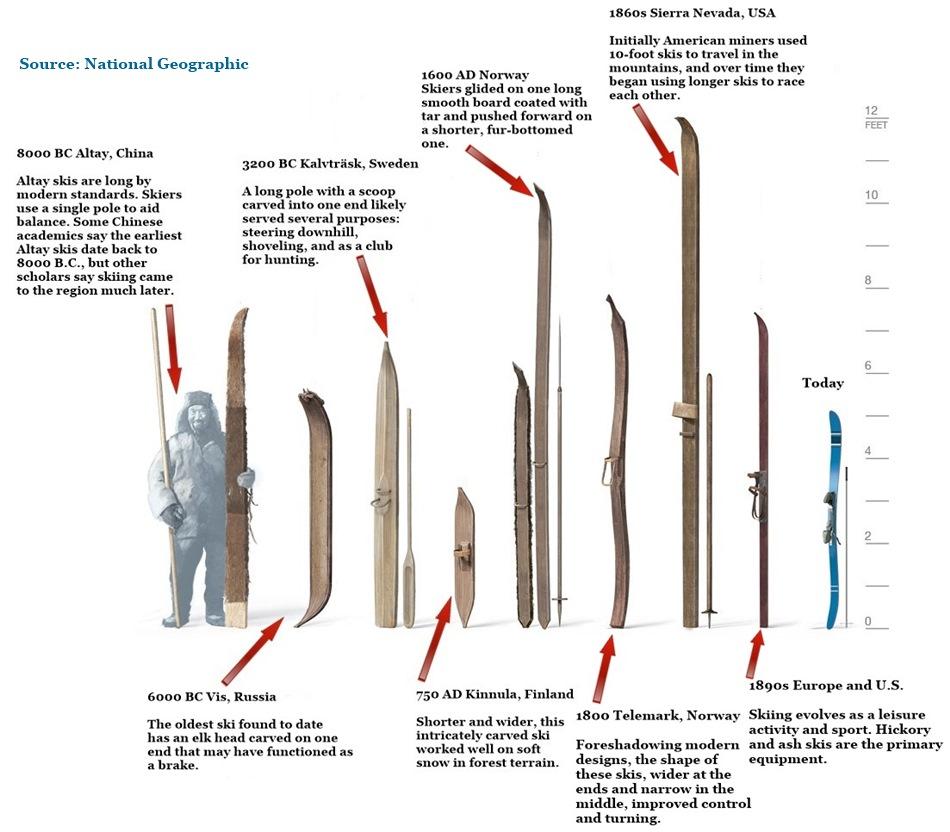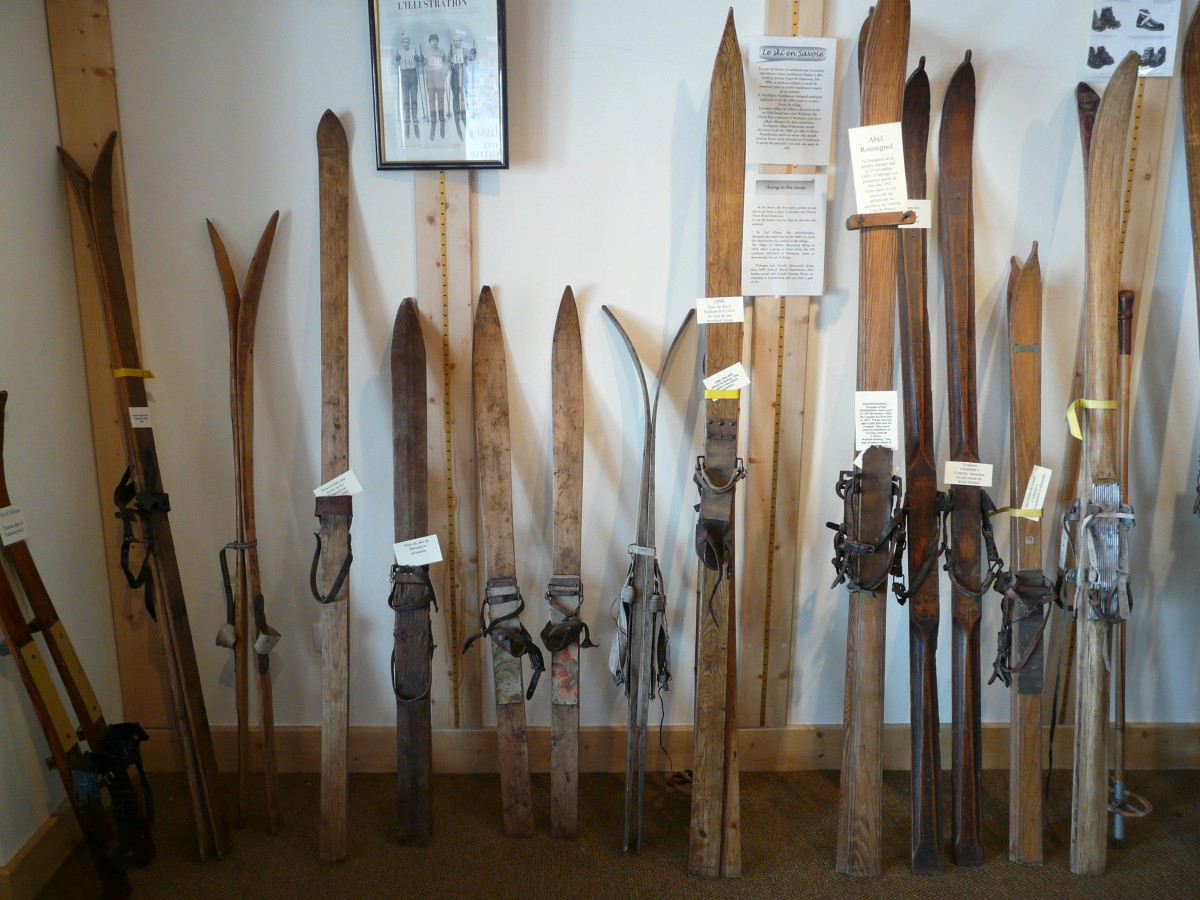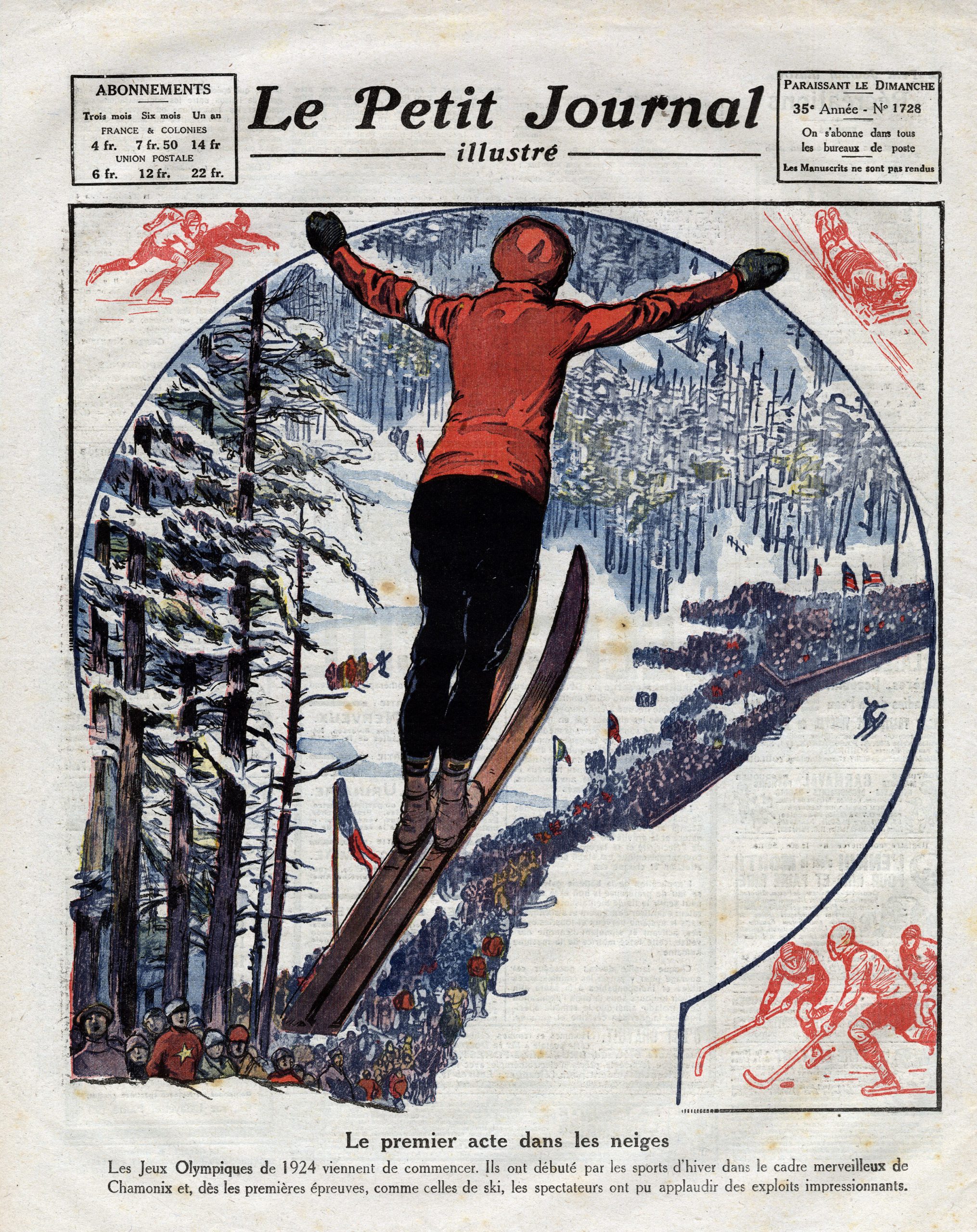Who invented skiing?
Some say the Austrians. Most say the Norwegians. But you’d be wrong on both counts. No, skiing is far older than you probably imagine and dates back even further than the wheel, to Central Asia, some 22,000 years or more. Yeah, that’s right. I was surprised, too.
In his book, Two Planks and a Passion: A Dramatic History of Skiing, Roland Huntford attempts to unravel the rich tapestry that makes up the history of what we now refer to as skiing. Cave drawings in Central Asia suggest that man was using skis way back in the Palaeolithic period; that is to say, during the last ice age.
All the evidence we have of skiing that far back is in the form of artwork left behind by our ancient ancestors. The oldest physical artifacts we have date back to the relatively much more recent Mesolithic era.

In the 1960s, ski-like objects dating back to around 6000BCE were discovered by archaeologist Grigoriy Burov in northern Russia. The hypothesis is that inhabitants used the long, flattened pieces of now-petrified wood to cross boggy marshes that had frozen over, snowy tundras, and other spongy terrain where they were likely to sink and otherwise freeze to death.
These were more like snowshoes than skis, though, but then again, skiing wasn’t first developed as a downhill sport. Alpine skiing came much later. Cross-country skiing as a necessity — to hunt and to travel — was the initial goal, so while bear-skin clad Russian homosapiens trudging across Siberia may seem like a far cry from the Alpine World Championships, they’re closer to what ‘skiing’ first was than what most people do these days.
Skis have been found all across the Old World, from Europe to Asia (snowshoes were de rigueur in the New World, possibly due to differences in snow density). It seems that everyone had the same idea at one time or another, spreading their weight across the soft snow to better traverse it, making hunting and migration possible when conditions would have otherwise prevented it.

The invention of ‘modern skiing’, or for-pleasure skiing, we might say, is far more modern, though. The Norwegians have documents and books dating skiing back to around the 1760s, when their military was tested in the use of them, skiing down slopes, navigating forests, and trudging across snowfields, all while shooting guns. The races they held were precursors to what we know as the Biathalon, which still very much keeps the spirit of these trials alive.
It wasn’t until the 1800s that the Telemark was invented in its eponymous Norwegian region. This was the first cambered ski, which allowed for much thinner construction. Until then, skis were very bulky and stiff in order to not bow under the weight of the person above. When the Telemark was invented, the curve of the wood counteracted the bowing problem, so that the elasticity of the wood helped to keep it level and prevent sinkage, as well as push the skier’s feet back into the air, helping with the issue of fatigue.
By 1870, the Telemark ski had come on leaps and bounds. Now featuring a sidecut to help with agility and turning, the ski shape we now know as the standard was taking shape. The sidecut allowed users to carve in a circle as the ski flexed and gripped the snow, rather than simply sliding sideways. Because of these developments and the new things that now could be done, the face of skiing was altered forever. Carving replaced skidding, and skiers found new joy in being able to choose a line with precision, which in turn opened up more opportunity in yet unexplored terrain.

It was around this time that the first Austrian resorts began ordering skis to be brought in, with some of the most historic resorts like Hochgurgl quickly seeing that their hiked and trailed Alps caught more than enough snow to bring this Scandinavian pass time to mainland Europe.
With stories of the military flying down hills, Telemark skis were shipped in en-mass, and the sport quickly began to take shape. It wasn’t long before lifts were being constructed and races were being staged. The tradition of Nordic skiing — that’s cross-country to you or me — was quickly overtaken by Alpine skiing. Tiring and somewhat boring to the majority of people, the idea of sliding down hills seemed much more appealing and fun. As such, Nordic skiing never made as much of a splash as downhill skiing did, and the resorts could only conform to what the people wanted.
By 1882, Europe was producing its own high-quality skis out of ash, while the Norwegian trailblazers were moving onto hickory, chasing an ever-thinner and stronger construction. Advancements in machine tools made shaping this hardwood easier, and development charged forward. Just eleven years later in 1893, the first laminated skis were constructed in Norway, while at the same time, the first ‘ski factory’ was opened in Switzerland.
By 1905, even the French were getting in on the action, and records show that a French infantry unit placed an order for a shipment of Telemarks. The French loved skiing so much that Nordic Skiing was an event at the very first Winter Olympic games held in Chamonix.

In 1926, Austrian mountaineer Rudolph Lettner added steel edges, further improving grip on hardpack, which until then had proved dangerous and unconquerable. With these advancements made in the construction of the ski, it was inevitable that someone would push things as far as they could go, and just two years later in 1928, Swiss ski racer Guido Reuge invented the Kandahar binding to keep up with the rising speeds and stresses put upon the rider.
At the same time, just a few valleys over, Hannes Schneider and Toni Seelos developed the stem turn and parallel turn — techniques still used and taught today. To share their new knowledge, they founded the first-ever skiing academy in St Anton, which remains a skiing mecca to this day.
Things only progressed faster from there with experimentation in aluminium, plastic, and laminate skis propelling the sport to even greater heights. Pun definitely intended.
By this time, of course, everyone was skiing — from Europe to the Americas, and even Japan! In 1936, Alpine, aka. downhill, skiing was included in the Winter Olympics for the first time, and soon after, skiing cemented itself as one of the world’s favourite pass-times.
In 2018, it was calculated that Germany had the highest number of skiers to its population, at a staggering 14,607,000 people doing it! That’s 36% of its population. And it was closely followed by France with 8.5 million, the UK with 6.3 million. Over a third of the populations of Switzerland and Austria also ski, as do a quarter of all Norwegians and Fins. Of course, they all need somewhere to go to do it. It’s a good thing, that there are more than 3,600 ski resorts in Europe alone serviced by almost 16,000 lifts.
What the future of the sport will look like I don’t quite know, but even if it means taking an electric train to the Arctic or a glider to the Himalayas, people aren’t likely to stop any time soon.





